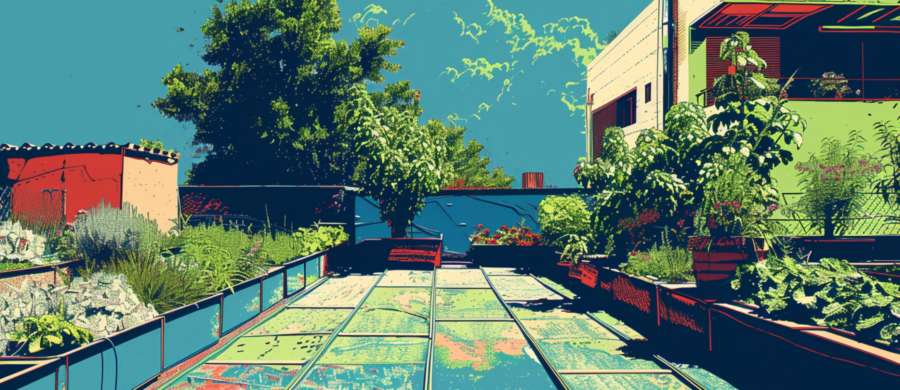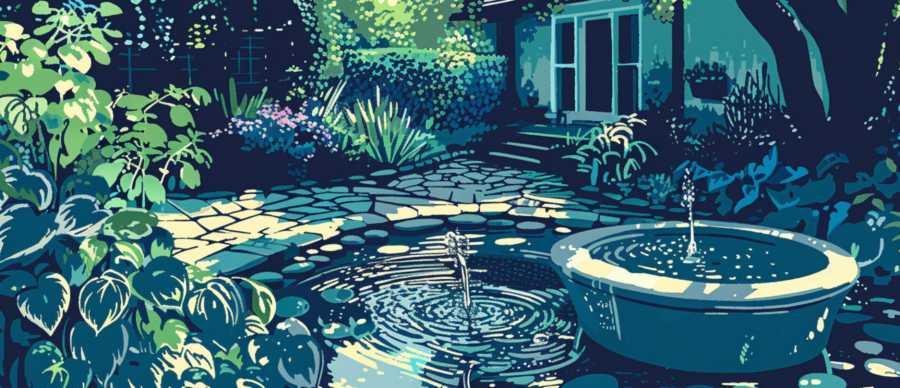Porous Concrete: The Unsung Hero of Hydration
Imagine a path that drinks instead of deflects. Porous concrete, that humble gray sponge, allows rain to slip through rather than rush off in guilty torrents. It’s not glamorous, but it’s quietly radical. By letting water percolate down to the soil, porous concrete prevents both runoff and resentment—from plants, that is. Lawns stay hydrated, roots stay happy, and storm drains get a day off.Traditional concrete, by contrast, behaves like an egotist at a cocktail party: it takes up space and reflects everything back at you. Water hits it, heat bounces from it, and plants nearby suffer as though someone turned up the thermostat. Porous concrete breaks that cycle. It’s civic-minded. It shares. And for homeowners’ associations (HOAs) weary of complaints about scorched grass and soggy driveways, it’s the difference between a microclimate of misery and a manageable ecosystem.
Decorative Curbing: Form, Function, and a Bit of Showmanship
Now, curbing. That architectural eyebrow that frames a garden’s face. Decorative curbing often gets mistaken for vanity—a kind of horticultural eyeliner—but it’s doing something far more noble. It’s containment with courtesy. Properly installed curbing keeps mulch where it belongs, deters invasive roots, and prevents soil erosion from turning your flowerbeds into a traveling roadshow.When curbing is set just right, it redirects foot traffic, guides water flow, and saves countless geraniums from accidental decapitation by lawnmower. The best curbs are slightly raised but not smug, sculpted enough to suggest taste but not wealth. Concrete edging can even be tinted or stamped to mimic stone or brick, a small deception in service of a better view. And when it rains, the curbs quietly direct water toward planted areas that need it most—a practical little encore.
There’s also the psychological effect. Homeowners faced with a crisp border between turf and bed tend to respect it. People are less likely to stomp across a garden that looks deliberate. It’s the same reason no one cuts across a carpeted foyer, even if it’s the shorter route. A clean edge enforces civility without complaint.
Smart Drainage: How to Keep the Garden from Drowning
Drainage, perhaps the least glamorous of outdoor subjects, is the one most often cursed after the fact. Water will go where it pleases, unless persuaded otherwise. Smart drainage design uses a blend of engineering and empathy—catch basins, swales, and French drains that move water gracefully away from structures while keeping the soil moist enough for life to thrive.In HOAs, where multiple properties share both runoff and resentment, coordinated drainage can be the difference between a friendly neighborhood and a small claims court docket. Installing gentle slopes and discreet channels ensures lawns are watered by the clouds, not by their neighbors’ misfortunes. Think of it as diplomacy through hydrology.
The smartest drainage systems work with the natural contours of the land. Instead of fighting gravity, they choreograph it. Water finds its way to collection zones—bioswales filled with ornamental grasses and native plants that sip the excess like polite dinner guests. What was once a puddle becomes habitat, and the lawn returns to its rightful purpose: being green and smugly untrampled.
When Concrete Meets Clover: A Love Story
There’s an odd romance between the organic and the engineered when they’re allowed to get along. Grass creeping up to the edge of a walkway; moss colonizing the micro-cracks in a retaining wall—it’s nature saying, “Thanks for the invitation.” Hardscaping, done right, doesn’t dominate the landscape; it courts it. The key is permeability, both literal and philosophical.Lawns benefit from nearby hard surfaces because those surfaces shape how humans behave. A well-placed path prevents erratic wanderings through delicate zones, reducing soil compaction around roots. Plants breathe easier. Shrubs maintain dignity. The entire garden, suddenly, feels less like a battlefield between order and chaos and more like a quiet negotiation between species.
And yet, there’s a delicious irony here. To make something flourish naturally, one must first impose a bit of structure. It’s the gardener’s paradox, the HOA’s eternal puzzle. Humans crave wild beauty, but only when it’s tidy enough for the newsletter photo. Fortunately, hardscaping gives us the illusion of control while quietly empowering the plants to do their messy, exuberant work beneath the surface.
Lessons for the HOA: A Manual in Moderation
HOAs often fear concrete like it’s a prelude to urban blight. They imagine sterile expanses of gray, the death of chlorophyll, the end of charm. But modern hardscaping is less authoritarian than it used to be. It’s adaptive, eco-minded, and—whisper it—stylish. For community managers balancing budgets and beauty standards, a few strategic installations can yield dramatic ecological returns.- Porous walkways reduce runoff fines and drainage complaints.
- Curbing maintains order without micromanagement.
- Smart drainage prevents property damage and keeps lawns healthy year-round.
Concrete Jungle, Gentle Garden
There’s a strange poetry in seeing concrete and clover coexist. The one stoic, the other tender; the one enduring, the other ephemeral. Together, they model coexistence better than most committees ever could. When rain filters through a porous path, nourishing the green life around it, it feels less like a compromise and more like an accord.The modern yard, after all, is an ecosystem masquerading as real estate. Each decision—a slab here, a drain there—alters its hydrology and mood. To hardscape well is to listen: to the slope of the soil, to the stubbornness of clay, to the way light lingers on a wet patio after the storm passes. There’s artistry in restraint, generosity in good design.
So perhaps concrete isn’t the enemy of nature at all. Perhaps it’s her accomplice. The right kind of hardscape lets the living world breathe, sip, and sprawl in peace. The lesson is simple: don’t pave over paradise—pave around it.
Article kindly provided by lgcypave.com


